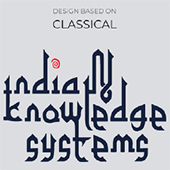The quality of the final product is measured by how effective it is at conveying the initial abstract idea to the viewer, or the experiencer.
An example of a temple can be used to demonstrate how different steps of the design process are implemented to reach the final form that we see. As can be seen in Figure 114, the process starts with realising an abstract idea, that is creating on earth a microcosm that represents the macrocosm (the whole universe). This idea is communicated using stories. This abstract idea is then metaphorised using different elements to make communication easier. Basic shapes like square and circle are given meanings based on their form and characteristics. Many elements are mapped to different parts of the human body, like the head, feet and the navel. Next, the relationships between these elements and their heir archies are realised for giving the structure a basic form. These hierarchies are put into place using frameworks like grids and the Talamana System. These frameworks help create consistent and ordered designs. Finally, the basic form of the temple is detailed using techniques like parametrization, in which simple recursive processes are followed to achieve complex end results. It should be noted that the temple is only an example, and the process can be extended in a similar way for other products as well. The Classical design process should not be seen as a rigid framework, but as a flexible guiding framework that adapts to the needs of the product, enabling it to convey the Formless ideas the artist has. There is no evidence that it had been followed by all artists across the subcontinent in ancient times, and much like the many other design processes being followed in contemporary times, it was but one of many ways of converting the Formless to Form.

Figure 114: Various stages of creating a Temple

